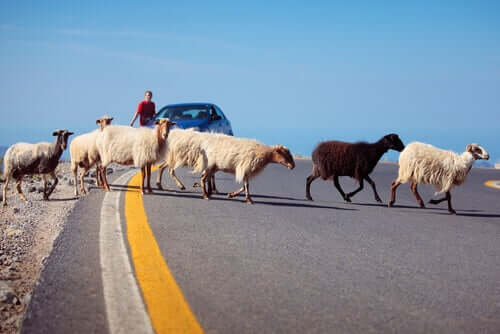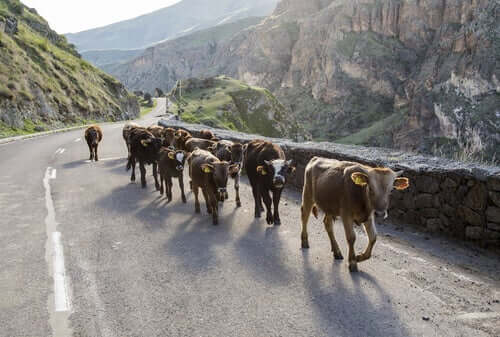Roadkill: Livestock and Wildlife in Danger


Written and verified by the lawyer Francisco María García
One of the most complex issues in rural areas and surrounding areas is in regard to the safety of livestock and wildlife on the roads. Not only how to safely move livestock from A to B. But also about the safety of all forms of wildlife. How should it all be regulated?
The peaceful coexistence of humans and their vehicles, pedestrians, and animals on the road needs regulation in order to avoid accidents and without having a negative impact on the economy of farms.
The development of roads has affected wildlife right from the start. It doesn’t just alter and isolate them from their habitat and populations, but it also limits their ability to move around and make a living.
Moreover, there’s a culture of indifference and hopelessness. Many of us were taught to ignore the many lifeless bodies on the road –including the bugs, and even birds, who smash into our fast-moving windshields.
How to avoid killing wildlife and livestock with your car

Most of these accidents can be avoided. People need to pay attention to the road instead of driving mindlessly looking at their phones and stereos. Have you ever considered that your vehicle is a very dangerous machine that can travel a significantly long distance in just one second?
Our eyes must be on the road at all times, paying attention to everything that is, or could be, within our vehicle’s path. Also, we must drive at speeds that allow us to stop quickly.
So, the USA, like many other countries, has animal traffic regulations in addition to their general vehicle traffic regulations. And, in this article, we’ll tell you a little bit about the official guidelines.
Projects about roadkill observation
Since 2009, some systems for roadkill observation were set in place around the USA. It seems the study of roadkill is a highly amenable way to apply citizen science observation methods.
Many observers enroll in reporting roadkill on a website. Then, these observers, often naturalists or scientists, provide identification, location, and other useful information they have. There’s even a website where you can see this information. This is available to anyone who cares to study the most likely causes of roadkill, actual wildlife distributions, wildlife movement, and other studies.
These websites for roadkill observation are available for California, Maine, and Idaho.
Livestock and wildlife: vehicle accident prevention

Vehicle collisions with animals can have many negative consequences:
- Possible death and/or wounding of the animals struck by the vehicles
- Injury and/or death of any vehicle occupants
- The loss of valuable livestock or domestic pets
- Harm to endangered wild species
- Partial damage or totaling of the vehicle and subsequent economic losses
In addition, you should follow these guidelines when traveling with or driving animals through public roads:
- Animals and their transporting vehicles shouldn’t invade pedestrian zones.
- Loose livestock and pack animals must circulate on the right side shoulder. If you absolutely need to use the road, stay close to the right edge.
- Likewise, they should never occupy more than half of that area.
- The circulation of animals on public roads should be done in groups of moderate length. Each of them with at least one driver.
- The drivers of the animals must give priority to vehicles when they reach an intersection.
- If two groups of animals travel in opposite directions and meet, then the circulation must alternate. That is, without interfering in the traffic of vehicles or pedestrians.
- Finally, livestock drivers should carry lights when driving on car traffic roads on days with low or insufficient luminosity, or with unfavorable climatic conditions. These lights should be white or yellow on the front and red in the back.
All cited sources were thoroughly reviewed by our team to ensure their quality, reliability, currency, and validity. The bibliography of this article was considered reliable and of academic or scientific accuracy.
- BOE: animales en la vía pública. Ley de Tráfico. Extraído de: https://www.boe.es/buscar/pdf/2015/BOE-A-2015-11722-consolidado.pdf
- Revista DTG.es. 2004. Responsabilidad accidentes por ganado en la vía pública. Extraído de: http://www.dgt.es/revista/archivo/pdf/num166-2004-Animales.pdf
This text is provided for informational purposes only and does not replace consultation with a professional. If in doubt, consult your specialist.